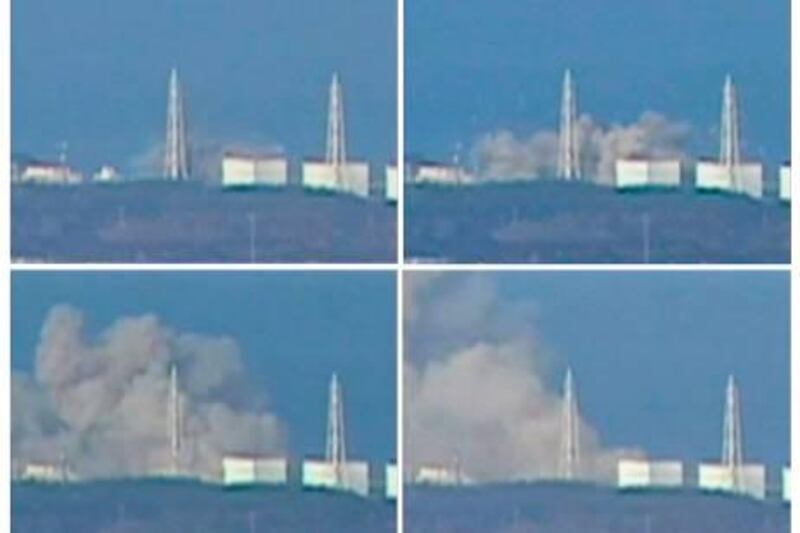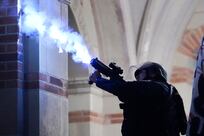KORIYAMA, JAPAN // Japanese officials were struggling today with a growing nuclear crisis and the threat of multiple meltdowns, as more than 170,000 people were evacuated from the north-eastern coast where police fear more than 10,000 people may have already died in Friday’s earthquake and tsunami.
A partial meltdown was already likely under way at one nuclear reactor, a top official said, and operators were frantically trying to keep temperatures down at the power plant’s other units and prevent the disaster from growing even worse.
Chief Cabinet Secretary Yukio Edano said today that a hydrogen explosion could occur at Unit 3 of the Fukushima Dai-ichi nuclear complex, the reactor that could be melting down. That would follow a blast the day before in the power plant’s Unit 1, as operators attempted to prevent a meltdown by injecting sea water into it.
_________________________
More
• Older nuclear reactors: cooling is core of the problem
• As globe watches in horror, reasons for hope in Japan
• Thousands still missing in Japan
• Japan's tsunami survivors survey damage
_________________________
“At the risk of raising further public concern, we cannot rule out the possibility of an explosion,” Mr Edano said. “If there is an explosion, however, there would be no significant impact on human health.”
More than 170,000 people had been evacuated as a precaution, though Mr Edano said the radioactivity released into the environment so far was so small it did not pose any health threats.
A complete meltdown – the collapse of a power plant’s systems and its ability to keep temperatures under control – could release uranium and dangerous contaminants into the environment and pose major, widespread health risks.
Up to 160 people, including 60 elderly patients and medical staff who had been waiting for evacuation in the nearby town of Futabe, and 100 others evacuating by bus, might have been exposed to radiation, said Ryo Miyake, a spokesman from Japan’s nuclear agency. The severity of their exposure, or if it had reached dangerous levels, was not clear. They were being taken to hospitals.
Mr Edano told reporters that a partial meltdown in Unit 3 of the Fukushima Dai-ichi power plant was “highly possible.”
Asked whether a partial meltdown had occurred, Mr Edano said that “because it’s inside the reactor, we cannot directly check it but we are taking measures on the assumption” that it had.
Japan struggled with the nuclear crisis as it tried to determine the scale of the Friday disasters, when an 8.9-magnitude earthquake, the most powerful in the country’s recorded history, was followed by a tsunami that savaged its north-eastern coast with breathtaking speed and power.
Unit 3 at the Fukushima plant is one of the three reactors that had automatically shut down and lost cooling functions necessary to keep fuel rods working properly due to power outage from the quake. The facility’s Unit 1 is also in trouble, but Unit 2 has been less affected.





